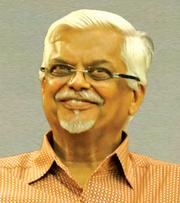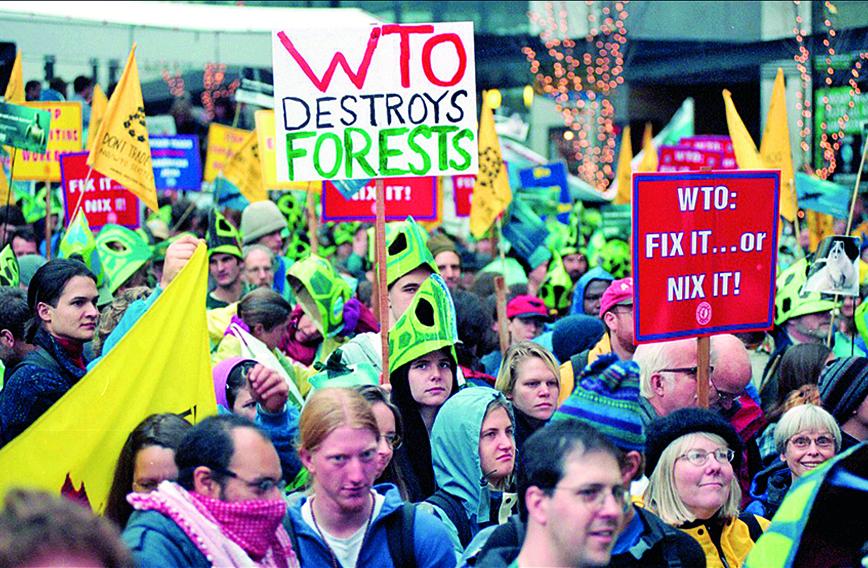
SANJAYA BARU
A summit, by definition, is for summiteers. Sherpas are needed and so are all the camp staff. Ordinary people are expected to stay a safe distance and laud summiteers. And that has not just applied to real mountain climbers but to the metaphorical ones too. For ages, kings, queens and other heads of state and government have met far away from the madding crowds. Then arrived late 20th century populism. Under pressure from what are variously called civil society groups and non-governmental organizations (NGOs), governments and multilateral organizations began allowing ‘people’ to come a bit closer to the summiteers.
Some got carried away by this tokenism. They dried up the moat, opened up the gates and let the barbarians in! James David Wolfensohn, president of the World Bank (1995 to 2005) invited representatives of various NGOs onto the Bank staff, into his executive offices and even into Bank annual meetings. At the Fiftieth Annual Meetings of the International Monetary Fund and the World Bank, in 1995 in Madrid, representatives of Greenpeace, an international NGO, were raising slogans and unfurling banners even as the King of Spain was welcoming the gathering.
In 1999 the World Trade Organization’s ministerial conference met in Seattle, US, and there things went out of control. Global civil society turned up in large numbers, over 40,000 according to some estimates, and there was mayhem on the streets. The media called it ‘The Battle of Seattle’. People were protesting against globalization and its consequences. After the street battles of Seattle, countries and organizations hosting heads of state and government summits became a bit careful about the distance that needed to be maintained between people and summiteers.
The issue became even more challenging with the increase in the incidence of terror attacks around the world, from Paris to Jakarta, New York to Mumbai. Yet, many countries used intelligent, non-intrusive, clever, tech-dependent methods to ensure the safety of summiteers while allowing civil society to exercise its freedom to gather and have its voice heard. There were exceptions. Authoritarian regimes could not only keep people away but could also ensure that the ‘people’ allowed to come anywhere close to summiteers were security cleared, or just security persons in plain clothes.
Grant it to the United States that even after the dastardly 9/11 terror attacks of 2001, it managed to ensure that heads of state and government from around the world could gather at the United Nations every year with their security assured and at the same time the people of New York could go about their daily lives without too much hindrance.
From Seattle 1999 to New York post-2001, the US government did what any democratic government would do, hosted summit meetings of heads of government without disrupting the normal life of its citizens. In fact, if anyone did disrupt normal life it was the NGOs and the protesters. One would expect that all democratic governments would go about doing their work while their citizens went about doing theirs. Getting people to stop working, getting them out of their workplaces and bazaars and markets and parks and streets and forcing them to stay home, while the Government, with a Big G, hosted a gathering of other Big Gs, is such an Indian thing to do. Well, that’s what the Government of India did, hosting the Group of Twenty (G20) summit.
Worse, not only were people kept away, many were in fact just covered up. Hiding the reality of poverty at a summit where leaders waxed eloquent about the need to eliminate the scourge of poverty, is the kind of hypocrisy that the Indian political class and bureaucracy have indulged in for ages. In New Delhi in September 2023 they practised it with aplomb.
Not only were the barbarians kept out of the gates, even the media were kept at a distance. Of course, one could argue that Prime Minister Narendra Modi has long regarded most of the media as barbarians. The physical distance between delegations to the G20 summit and the official media covering the summit was yet another symbol of the Modi government’s view of the media. Many journalists from around the world covering the summit have since returned to tell it all. No media group had it worse than the White House press corps that had to sit in a van that was part of President Joe Biden’s motorcade, while POTUS was dining with the PM.
Members of the Modi government, the summit organizers, fellow travellers of the ruling establishment among the media and the think tank community are all complimenting themselves for the fantastic success of the New Delhi summit. And, why not. The summit was a success. It went off well, it was glitzy and well choreographed. Indian diplomacy pulled a rabbit out of the hat, getting consensus on the Delhi Declaration. So on and so forth. No one should belittle the outcome and the hard work of all those who made the summit a success. But why keep people covered up, locked up and out?
Sanjaya Baru is a writer and Distinguished Fellow at the United Service Institution of India
Comments
Currently there are no Comments. Be first to write a comment!




